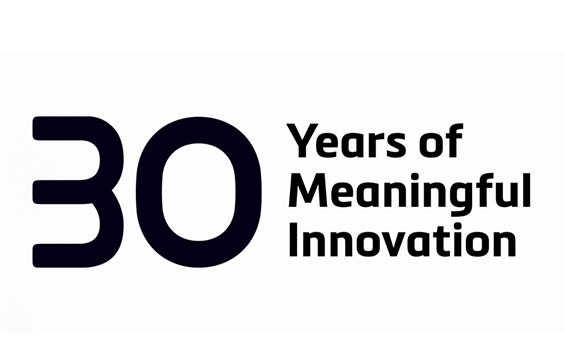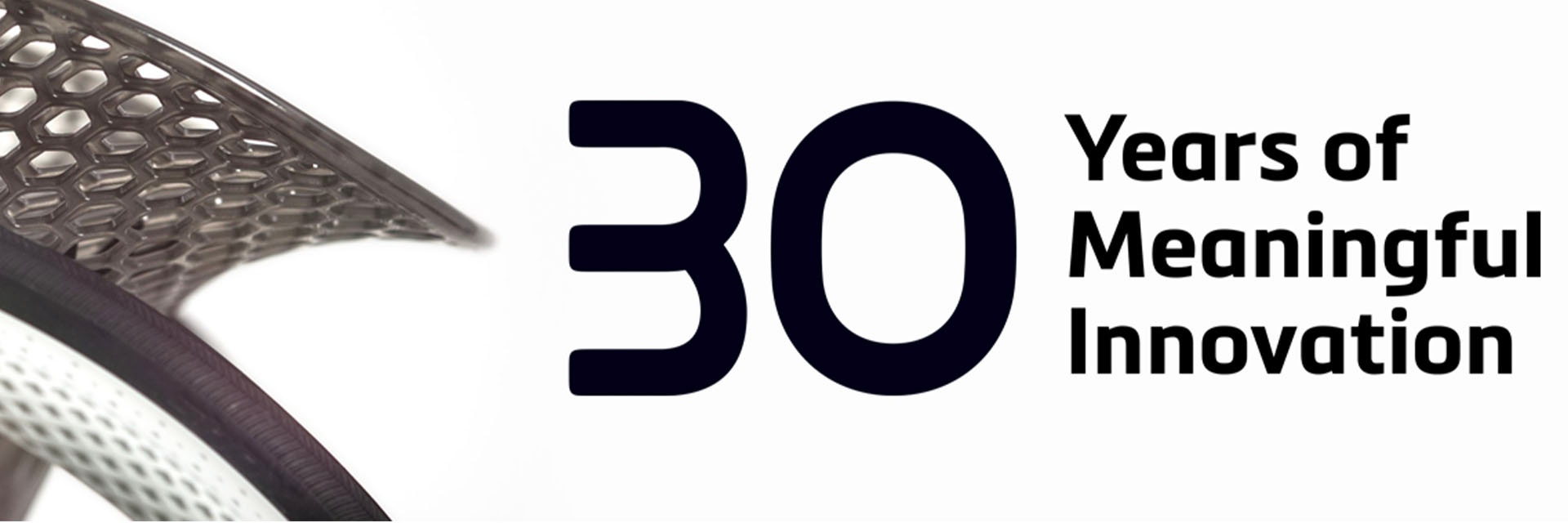EXPERT INSIGHT
30 Years of Materialise: Top 5 Highlights from the Interview with Fried

Join us for this interview with Fried Vancraen, Founder and CEO of Materialise and one of the true pioneers of the 3D printing industry. Together with Fried, we will look back at the past three decades and address the upcoming challenges and opportunities for our industry — as we continue to transform manufacturing.
Looking back at three decades
In June 1990, Fried Vancraen and his wife Hilde founded Materialise and embarked on a mission to create a better and healthier world through our hardware and software infrastructure and an in-depth understanding of 3D printing.
But the radical change didn’t come overnight. With incremental steps, 3D printing has indeed revolutionized the way we manufacture products and has helped to save lives. This interview between Fried and Kristof Sehmke, our Communication Manager, goes over the last 30 years of the company’s story with a look forward to the future. Read on to learn about five highlights from the interview!
1. Surprise at the evolution of AM
Fried says, “I always recognized 3D printing as a paradigm shift in manufacturing and as a technology with huge opportunity,” but he has been pleasantly surprised with the technology as it exists today — especially when it comes to metal sintering. He adds, “It has evolved even beyond my expectations, but not in a way I had anticipated. I must admit that in the early years, I was highly skeptical whether we would ever be able to use it at economically viable rates. Our CTO, Bart Van der Schueren, proved in 1991 with his first test that metal sintering was even possible. However, we have come a very long way from the first material test, which was very useless and brittle, to metal printing being a very important part of our 3D printing offering today.
2. AM in the pandemic
When the pandemic hit, a lot of sectors looked to 3D printing as a fast solution to manufacture parts that experienced shortages. The Materialise team dove in with their expertise in D&E (design and engineering) and quickly developed a hands-free door opener that was freely downloaded more than 100,000 times to be printed around the world. Additionally, Fried says, “When we saw the need in the medical sector, we listened to our contacts — pulmonologists that were on the frontline, in the emergency rooms, and in intensive care units of the hospitals — and we realized they needed a solution to efficiently provide patients with oxygen.” This led to the development of non-invasive PEEP masks which are helping people today in developing countries who don’t have access to expensive ventilators. The masks can oxygenate patients quickly and without consuming as much oxygen as a ventilator.
“Sustainability is not just about the environment. Sustainability, in medical, is getting the treatment right the first time, doing a surgery in such a way that people can live comfortably for the rest of their lives.”
— Fried Vancraen, Founder and CEO of Materialise.
3. How the AM industry can improve today
Fried shares, “I do believe that the biggest need is on the side of quality control and reliability. If we can speed up the technology, make it use less energy, then it is very positive. But there is also a dominant need for reliability.” He believes in maintaining the pace of continuous performance improvement while keeping quality control stable.
Adding to quality parameters, cost reduction while producing in high volume is also a challenge that the 3D printing sector can still improve on. He adds, “It has been a 30-year continuous process, where each year small steps have been taken. We should be able to accelerate the pace of the small steps if we want to grow and keep growing fast.”
4. Using technology in a sustainable way
As one of our focuses for the future, Materialise is always looking for ways to improve AM’s sustainability. However, Fried says, “There is no sustainable technology, only technology that can be used in a sustainable way. And that is also true for additive manufacturing. If you use it intelligently to fulfill needs beyond traditionally manufactured products, and then combine it with renewable energy, then the negative effect of the additional energy that is often needed is taken out of the equation. If you are careful with the choice of materials, and you can eventually recuperate or recycle those materials, then you can end up with very sustainable solutions that were never possible before — thanks to 3D printing.”
Additionally, Materialise launched Mindware to advise customers on making sustainable solutions that go beyond just making a fast prototype or a pre-production series. Fried adds, “It really alters the approach to product development and to the way you place products into the market, which is much more comprehensive.”
5. Sustainability goes further than just the environment
Another particular focus is supporting medical treatments with 3D planning, personalized implants, and guides so that patients can have better outcomes the first time around. As Fried explains, “Sustainability is not just about the environment. Sustainability, in medical, is getting the treatment right the first time, doing a surgery in such a way that people can live comfortably for the rest of their lives.” The cost of personalized guides can be outweighed by the fact that revision surgeries cost much more, both in price and more importantly in quality of life for the patient.
From past to future
In the future, our focus continues to be helping people use 3D printing technology in a sustainable way. We want to give our customers choices such as ordering parts printed with 100% recycled powder to reduce waste or lowering CO2 emissions with Materialise switching to renewable energy sources to power production. Materialise has already achieved this in headquarters and is planning on fully shifting to green energy at all plants around the world. Fried adds, “We are also committed to sustainability research, such as conducting LCAs (life cycle assessments) with other industry leaders like BASF, as this will allow the AM industry as a whole to make the technology and its applications more sustainable.”
However, the future wouldn’t be possible without our 30 years of history. Fried clarifies, “It fills me with gratitude and pride — gratitude towards the many people inside the company, but also the customers, partners, and suppliers that made this fantastic evolution of Materialise in the 3D printing industry possible and pride, because we have not just been tagging along. I do believe that we contributed significantly to the evolution of the entire industry, and consequently to the many meaningful applications that 3D printing allows today.
Share on:
You might also like
Never miss a story like this. Get curated content delivered straight to your inbox.
